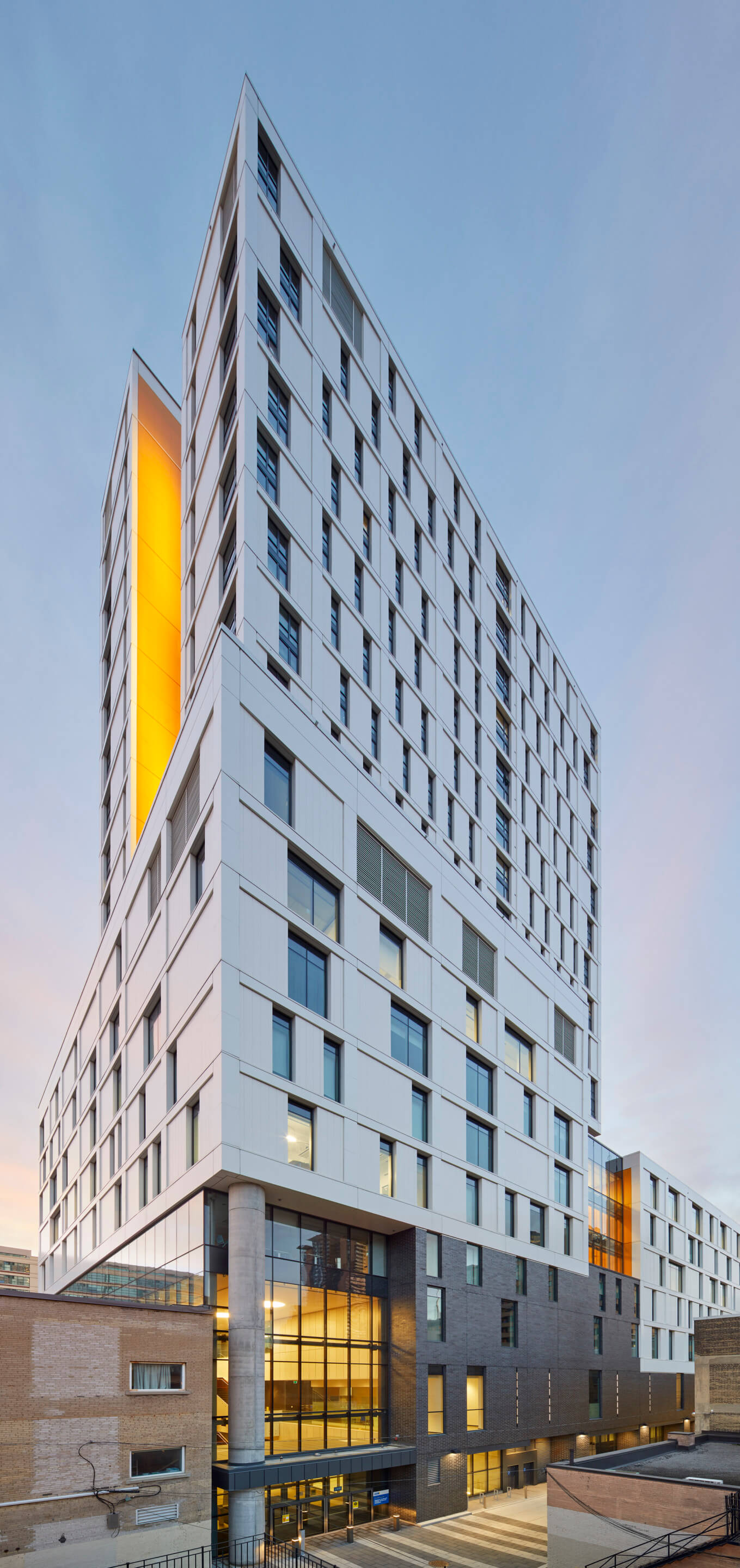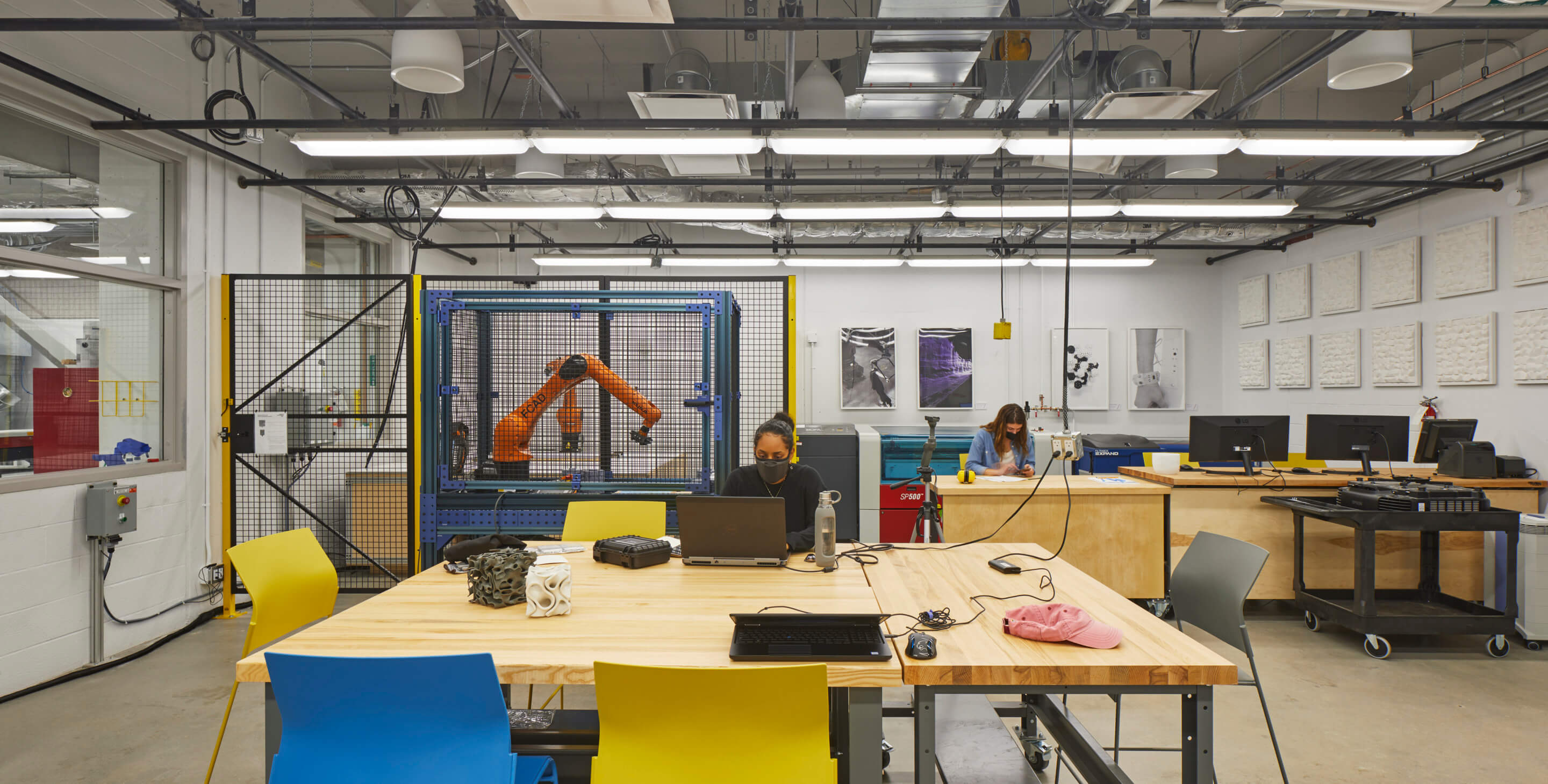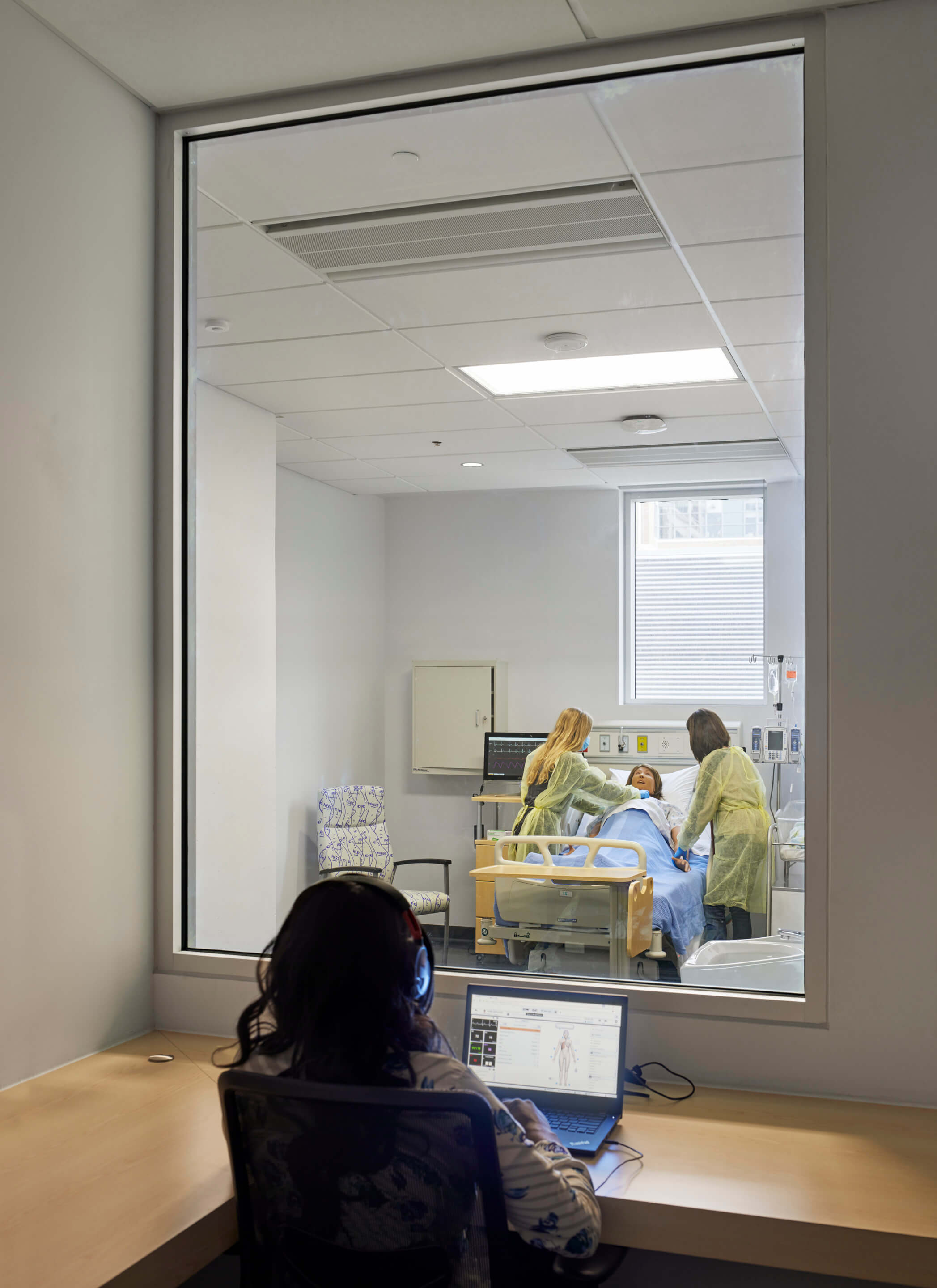
Of the 40 or so buildings operated by Ryerson University, a rapidly growing public university in Toronto, no others reach as high as the Daphne Cockwell Health Sciences Complex. The 28-story building spans roughly 300,000 square feet and accounts for a sizable chunk of the 800,000 Ryerson has added in the past decade as part of an ambitious 2008 master plan.

- Architect
Perkins&Will - Structural and Facade Engineer
WSP - Cladding
Sound Solutions - Mechanical Engineer
MCW - Construction Manager
Eastern Construction Company - Location
Toronto - Completion Date
2019 - Lighting Design
Crossey - Custom Metal Paneling
Gage Metal Cladding - Landscape Architect
DTAH
The Health Sciences Complex houses facilities for four academic departments, including the Schools of Nursery and of Nutrition, as well as 330 student residences. Amenities abound, from a ground-level fab lab (complete with an ominous robot arm) to a rooftop garden. A cross-section through the building reveals a dense layering of programs, but also an openness, thanks to several airy, multistory courts.
Obtaining that spatial variety followed from contradictory desires. Perkins&Will, whose Toronto and Vancouver studios were behind the design, wanted to set the project off from its downtown neighbors, a patchy mix of commercial and residential towers, and a lowly filling station. At the same time, the firm prized neighborliness. “We wanted to differentiate this building through the expression of public space,” said Toronto studio design director Andrew Frontini.
But first, he and his team would have to wrestle with the prevalent form of development on tight downtown Toronto lots like this one: the tower on a podium. By treating the two as quasi-independent components, they were able to slice and dice their way to a pleasing parti. In diagrams, bands representing “public” space burrow underneath the podium and up through the tower block.

These massing studies prompted a closer consideration of the pedestrian experience. The architects set the building back from the property line, widening the sidewalk along Church Street, and located an attention-grabbing fab lab on the ground level. They also created a through-block connection to other parts of campus. “This public arcade,” said Ryan Bragg, principal at Perkins&Will’s Vancouver studio, “encourages the building to form part of accepted pedestrian routes in the neighborhood.”

Storefronts and interstitial glazing indicate these connections. Vibrant orange panels further delineate public routes within the complex. Accounting for the vertical organization of spaces, the architects incorporated study lounges and rest points between floors—what Frontini called “hopping atria”—to encourage users to take stairs when possible. Elevator banks follow a similar flow of traffic, ensuring that regardless of accessibility needs, all users could enjoy the sense of arriving and departing.

Perkins&Will devoted just as much thought to the building’s environmental impact. The airtight exterior envelope, which largely comprises panelized aluminum cladding, was designed with a low window-to-wall ratio to minimize heat loss and gain. (Anticipating changes over the building’s 100-year target life span, the architects devised a “super grid,” enabling orderly alterations to the fenestration.) Frontini pointed to the intensive specification process, in which his team screened more than 250 building and interior products for their toxicity levels, choosing those with few or, ideally, no toxic materials. In these ways, the Health Sciences Complex caters not just to the needs of the Ryerson University community but also to the wider urban context.


